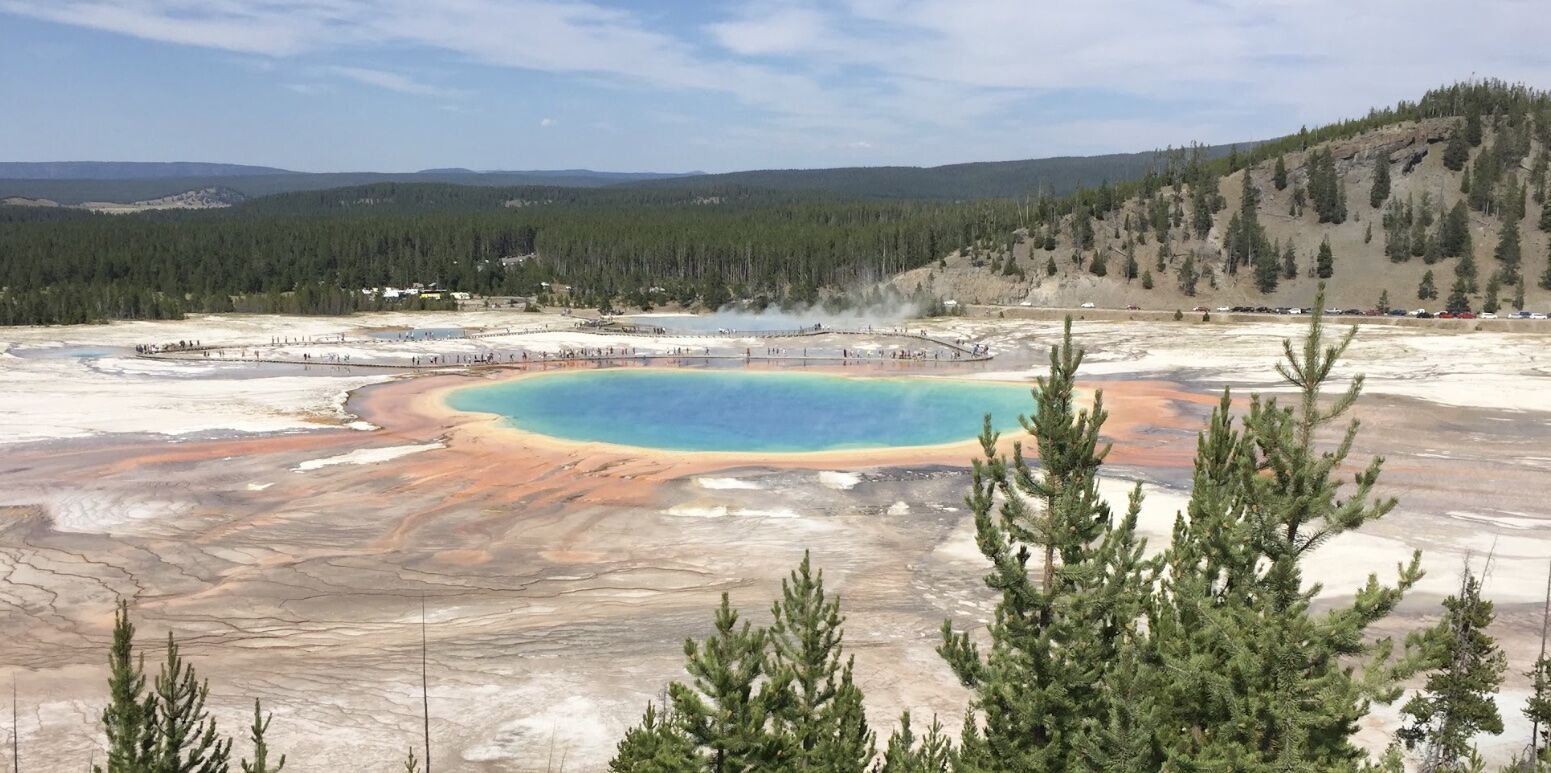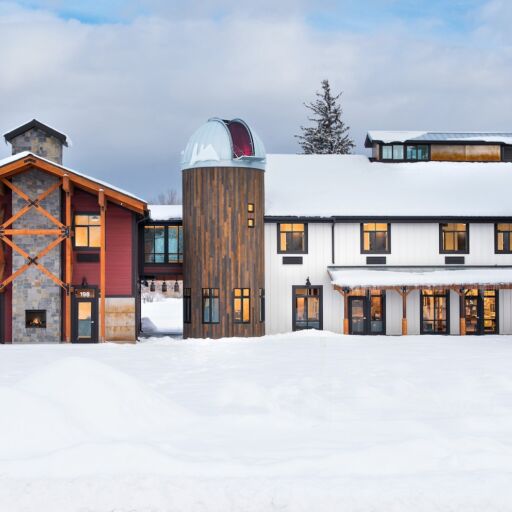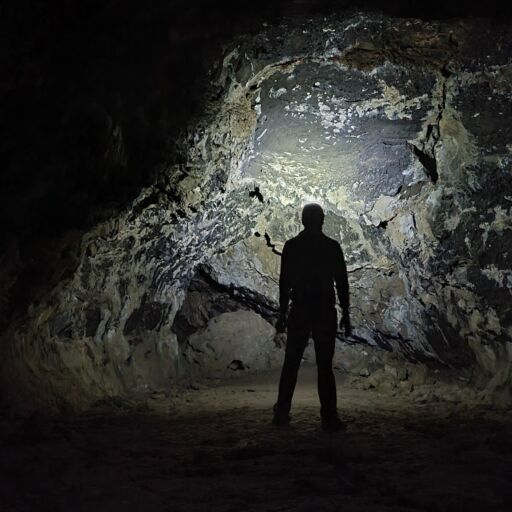I lived in the center of Yellowstone National Park for nine months. My bedroom was half a mile away from the Grand Canyon of Yellowstone. At night, the roar of the Lower Falls crashing 300 feet to the canyon floor lulled me to sleep. During the day, I worked as a wrangler, leading wide-eyed families on horseback past bison and elk. We regularly caught sight of black bears, but only once was I confronted with a fully grown grizzly on the trail. Mostly, we saw bison.
Yellowstone is the largest intact ecosystem in the northern hemisphere. For over 3,000 square miles, the land is unchanged by humans. I loved driving to one of the highest points, Dunraven Pass, to look out across the park. In the early mornings, the thermal areas steam in the valley below, and herds of bison make their way across the hills. The white tips of the Absaroka Mountains stand out in the distance.
The first time I looked out from Dunraven, I felt overwhelmed by the amount of land in front of me. I wanted to see everything. I spent the following months trying to do just that. It didn’t take long to realize that I could spend years exploring the park.
But I know most visitors only have three or four days to explore if they are lucky. As a wrangler, I regularly discussed the ideal weekend trip through Yellowstone with guests during my horse tours. Below is the advice I gave them.
Don’t Make This Grand Loop Mistake
A 140-mile road called the Grand Loop Road connects the entire park. It creates a figure eight pattern with a southern and northern loop. The biggest mistake I saw visitors make was trying to drive the entire figure eight in one day. Don’t do it. Bear-jams, when tourists leave their cars running while jumping out to get a good view of a bear, add hours to a drive. And bison-jams, when bison block traffic by laying on the road to enjoy the sun-warmed asphalt or by using the roads as a shortcut, can be even worse.

I recommend taking at least one day to explore the northern loop and another day to explore the southern. Don’t try to cram everything into a short trip. You won’t have time to properly appreciate how astonishing each attraction is if you rush from one to the next. Leave time to be spontaneous as Yellowstone is full of unexpected adventures.
Southern Loop
Old Faithful
You can’t miss Old Faithful — the iconic geyser that erupts so reliably that it can be predicted within 15 minutes of accuracy. Geysers are mind-blowing phenomena that affect all your senses, from smelling volcanic sulfur to feeling the spray of water. They are the closest you can get to watching a volcano erupt. A geyser near Old Faithful called Steamboat blows water 300 feet into the air, as high as the Statue of liberty.
After seeing the Geyser Basin, take the time to enjoy the Old Faithful Inn, the largest log cabin hotel in the world. The place is soothing; I have napped many times in the rocking chairs on the second floor of the open lobby, blissfully unaware of any thermal activities going on outside.
Grand Prismatic
The Grand Prismatic is near Old Faithful and so busy that parking is difficult — an unexpected situation when you are four hours away from the nearest airport. It is one of the most photographed spots in the park for good reason. The hot spring follows the spectrum of white light through a prism going from deep blue at its center to bright red on the pool’s edge. To get the best perspective of the colors, go to the Fairy Falls overlook, which is a quick hike up a nearby hill.
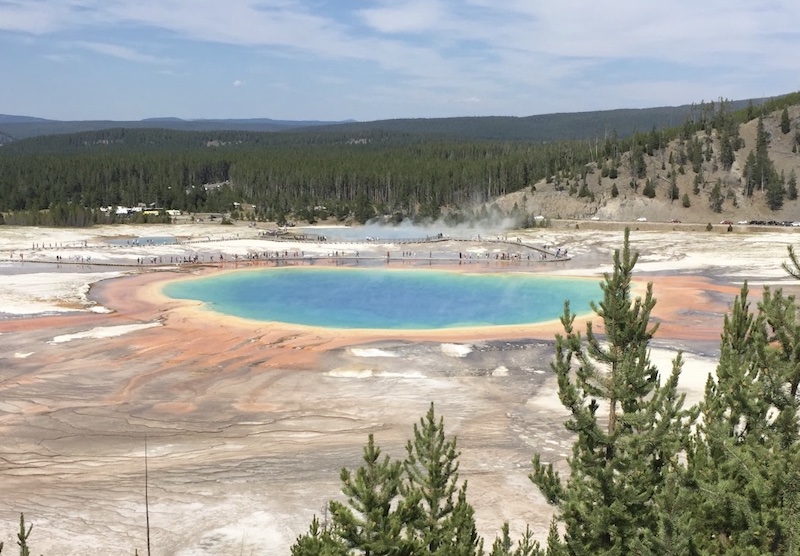
West Thumb
If you continue along the Grand Loop Road, you will come across West Thumb, a geyser basin along the edge of Yellowstone Lake. These hot springs don’t have the rainbow color of their western neighbor, but they make up for it with an expansive vista of the largest high-altitude lake in the United States. Each pool is a different shade of startling bright blue. And, as an added perk, it is usually half as busy as the other thermal attractions in the park.
Northern Loop
The Grand Canyon of Yellowstone
The canyon is beautiful, with steep walls stained shades of yellow, white and pink and the Yellowstone River raging at its base. On cooler days, you can see steaming vents throughout the canyon walls.
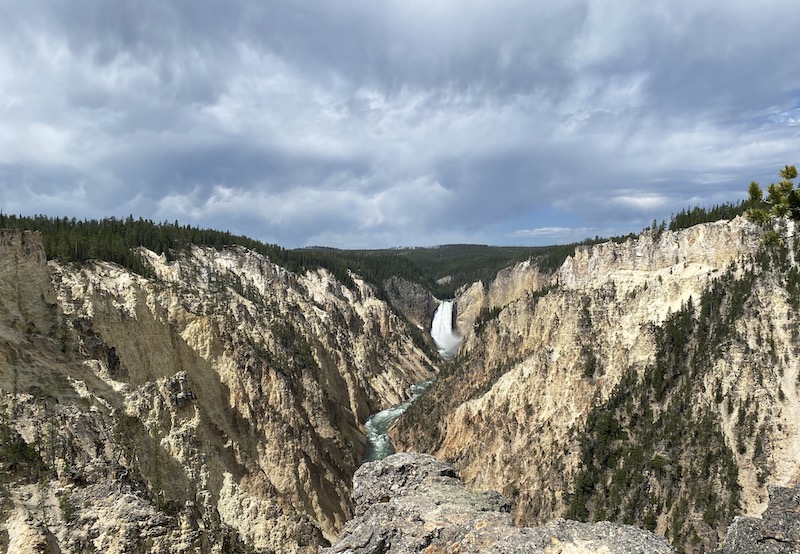
One of my favorite hikes in the canyon is down to the Lower Falls outlook. It is a tough walk, but worth it to stand feet from the waterfall. This close, the waterfall is deafening and the air is cool from the moving water. When you look out from this lower vantage point, you can grasp the enormity of the canyon.
Backcountry
Out of the millions of visitors that the park gets every year, only two to three percent leave the manmade structures, like visitor centers or roads. I urge everyone who visits to go to the backcountry, either on foot or on horseback. If you are up for a bigger hike, I recommend heading north to Bunsen Peak, an ancient volcano that blew its top a millennia ago. It makes for a mild 2-mile incline with a bird’s-eye view of the Gallatin Mountains and the white terraces of Mammoth.
Mammoth is a series of white steps that seem to grow from the hillside like an inside-out cave. It is different from the other hot springs and geysers, more otherworldly. I get an eerie feeling when I get close to it.
Swim
None of the hot springs I have mentioned so far are safe to touch, let alone swim in. Many springs are scalding and so acidic they can dissolve bison flesh. In some pools, you can see the bleached bones of a creature who wandered too close.
There are only two safe places to swim in the park, Firehole in the south, and the Boiling River just north of Mammoth. The Boiling River is the best because it is warmer. You can see the hot spring that produces the heat, and the mountains crowd right against the water.
Horseback Ride From Roosevelt Cabins
The park was designed to be explored on horseback. Sitting on the back of a horse with a bull bison standing 50 yards away will make you feel like you are a part of the land. I recommend using an outfitter like Yellowstone Roughriders or one of the park concessionaires at Canyon Corral or Roosevelt Lodge.
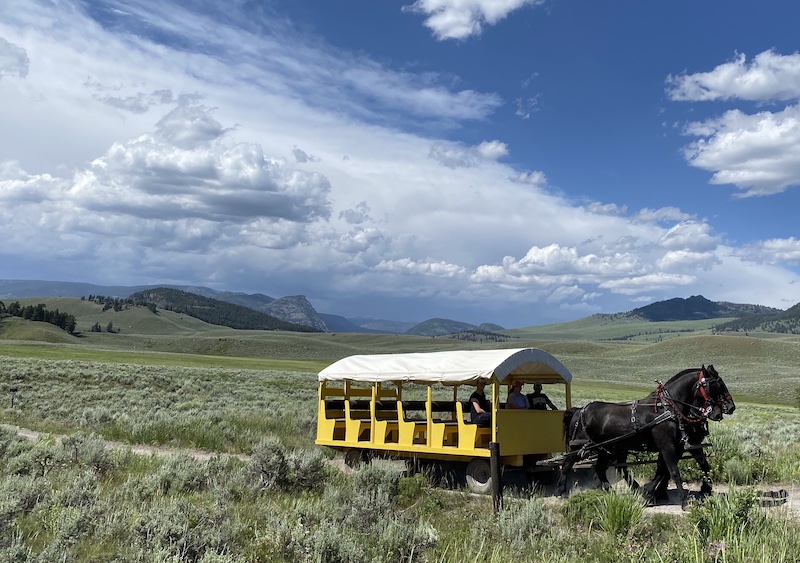
The rides at Roosevelt have the bonus of a backcountry cookout. You ride for an hour, past petrified forests and mountain lakes, to a backcountry camp where they feed you steak and some of the best corn muffins I have ever eaten.
Roosevelt also has rustic one-room cabins. They are historic, cozy and communal, with shared bathrooms and stoves for heat. The main lodge building, with its back to a pine-covered hill, now serves as a restaurant. The log cabin feels unchanged, like you could catch a glimpse of Theodore Roosevelt watching the sunset in one of the rocking chairs on the front porch.
Lamar and Hayden Valley
Most visitors are starting to run out of time by now, and I usually encourage them to exit the park through Lamar Valley. It feels like some sort of Eden. The road traces the Lamar River with herds of bison, elk and pronghorn antelope grazing on the surrounding hills. I am struck by just how much life the park can support. At the time of this writing, Lamar is closed due to flooding, but you can still enjoy Hayden Valley, which is even bigger than Lamar and almost as beautiful.
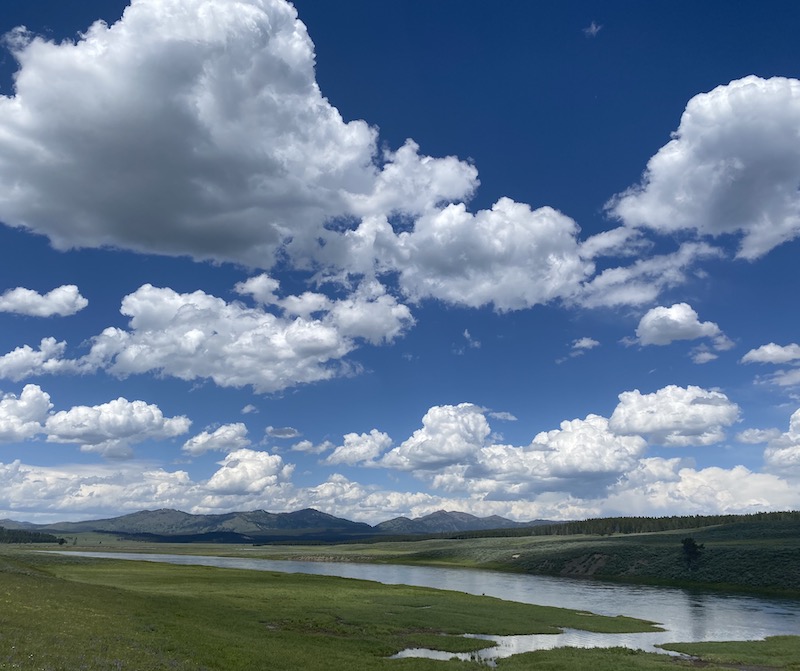
In both valleys, you have the chance to spot a gray wolf. They occasionally make dens on the hillsides across the Yellowstone River, far from the road. Croppings of wolf watchers, usually retirees that spend their summer watching wolves on scopes, betray their presence. They are a friendly bunch. If you ask nicely, they might let you take a look through their scopes.


